2-Isopropylphenol
- CAS NO.:88-69-7
- Empirical Formula: C9H12O
- Molecular Weight: 136.19
- MDL number: MFCD00002224
- EINECS: 201-852-8
- SAFETY DATA SHEET (SDS)
- Update Date: 2025-01-27 09:38:02
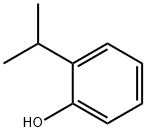
What is 2-Isopropylphenol?
Description
2-Isopropylphenol is medicinal, creosote.
Chemical properties
CLEAR SLIGHTLY YELLOW LIQUID
Chemical properties
2-Isopropylphenol has a medicinal, creosote odor
Occurrence
Reported found in Japanese whiskey, Romano cheese and dried bonito
The Uses of 2-Isopropylphenol
2-Isopropylphenol is an impurity of Propofol (P829750).
The Uses of 2-Isopropylphenol
2-Isopropylphenol was used to study the ability of 2-isopropylphenol to activate estrogen receptor (ER), androgen receptor (AR), progesterone receptor (PR) and estrogen-related receptor (ERR).
Definition
ChEBI: A member of the class of phenols carrying an isopropyl group at position 2.
Aroma threshold values
Detection: 1 ppb
General Description
Light-yellow liquid. Less dense than water and insoluble in water. Hence floats on water.
Air & Water Reactions
Insoluble in water.
Reactivity Profile
Phenols, such as 2-Isopropylphenol, do not behave as organic alcohols, as one might guess from the presence of a hydroxyl (-OH) group in their structure. Instead, they react as weak organic acids. Phenols and cresols are much weaker as acids than common carboxylic acids (phenol has Ka = 1.3 x 10^[-10]). These materials are incompatible with strong reducing substances such as hydrides, nitrides, alkali metals, and sulfides. Flammable gas (H2) is often generated, and the heat of the reaction may ignite the gas. Heat is also generated by the acid-base reaction between phenols and bases. Such heating may initiate polymerization of the organic compound. Phenols are sulfonated very readily (for example, by concentrated sulfuric acid at room temperature). The reactions generate heat. Phenols are also nitrated very rapidly, even by dilute nitric acid. Nitrated phenols often explode when heated. Special Hazards of Combustion Products: Irritating vapors and toxic gases, such as carbon dioxide and carbon monoxide, may be formed when involved in fire [USCG, 1999].
Health Hazard
Exposure can cause irritation of eyes, nose and throat.
Fire Hazard
Special Hazards of Combustion Products: Irritating vapors and toxic gases, such as carbon dioxide and carbon monoxide, may be formed when involved in fire.
Properties of 2-Isopropylphenol
| Melting point: | 12-16 °C (lit.) |
| Boiling point: | 212-213 °C (lit.) |
| Density | 1.012 g/mL at 25 °C (lit.) |
| vapor pressure | <0.05 mm Hg ( 25 °C) |
| refractive index | n |
| FEMA | 3461 | 2-ISOPROPYLPHENOL |
| Flash point: | 192 °F |
| storage temp. | Store below +30°C. |
| solubility | insoluble |
| form | Liquid |
| pka | 10.49±0.10(Predicted) |
| color | Clear slightly yellow |
| Odor | at 0.10 % in propylene glycol. medicinal creosote phenolic |
| Water Solubility | insoluble |
| JECFA Number | 697 |
| BRN | 1363322 |
| CAS DataBase Reference | 88-69-7(CAS DataBase Reference) |
| NIST Chemistry Reference | Phenol, 2-(1-methylethyl)-(88-69-7) |
| EPA Substance Registry System | o-Isopropylphenol (88-69-7) |
Safety information for 2-Isopropylphenol
| Signal word | Danger |
| Pictogram(s) |
 Corrosion Corrosives GHS05 |
| GHS Hazard Statements |
H314:Skin corrosion/irritation |
| Precautionary Statement Codes |
P280:Wear protective gloves/protective clothing/eye protection/face protection. P303+P361+P353:IF ON SKIN (or hair): Remove/Take off Immediately all contaminated clothing. Rinse SKIN with water/shower. |
Computed Descriptors for 2-Isopropylphenol
| InChIKey | CRBJBYGJVIBWIY-UHFFFAOYSA-N |
New Products
1-Boc-4-cyanopiperidine tert-Butyl carbazate 1-(TERT-BUTOXYCARBONYL)-2-PYRROLIDINONE TETRABUTYLAMMONIUM CYANIDE TETRAHYDRO-2H-PYRAN-3-OL 3-Pyridineacrylic acid Nickel(II) perchlorate hexahydrate, 98% 4-Bromophenylacetonitrile, 95% 3-Bromo-4-fluoroaniline, 97% Sodium tetraborate decahydrate, 98% Palladium(II) acetate, trimer, Pd 99% 4-Bromo-2-chlorotoluene, 97% Tadalafil Clopidogrel bisulfate Sitagliptin Phosphate Monohydrate Cabergoline Fexofinadine HCl Etoricoxib 4-Amino Acetophenone 2-Chloro Acetophenone Amlodipine Base 2,3,5-Triiodobenzoic Acid Pyrrolidine Diiodo PentoxideRelated products of tetrahydrofuran
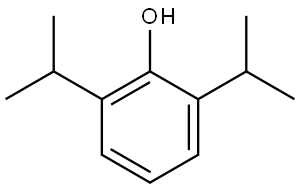
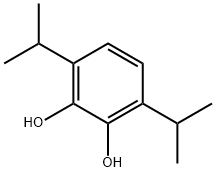
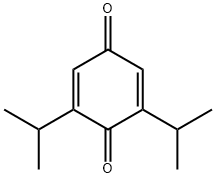
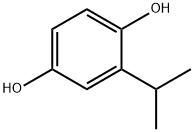
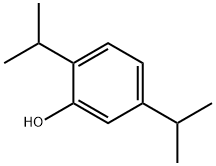
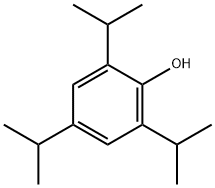
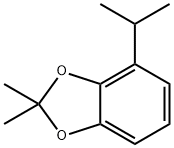

You may like
-
 2-Isopropylphenol 88-69-7 99%View Details
2-Isopropylphenol 88-69-7 99%View Details
88-69-7 -
 2-Isopropylphenol CAS 88-69-7View Details
2-Isopropylphenol CAS 88-69-7View Details
88-69-7 -
 2-Isopropylphenol CAS 88-69-7View Details
2-Isopropylphenol CAS 88-69-7View Details
88-69-7 -
 366789-02-8 Riveroxaban 98%View Details
366789-02-8 Riveroxaban 98%View Details
366789-02-8 -
 Carvedilol 98%View Details
Carvedilol 98%View Details
72956-09-3 -
 Abiretorone 154229-18-2 98%View Details
Abiretorone 154229-18-2 98%View Details
154229-18-2 -
 73590-58-6 Omeprazole 98%View Details
73590-58-6 Omeprazole 98%View Details
73590-58-6 -
 Sertraline HCl 98%View Details
Sertraline HCl 98%View Details
79559-97-0
